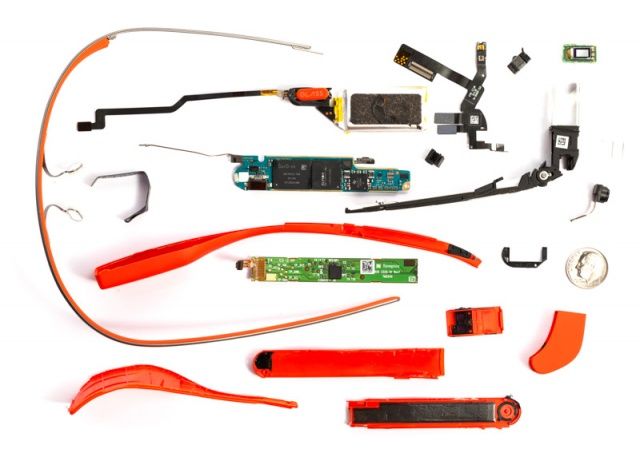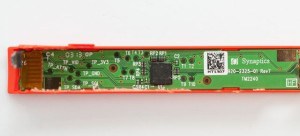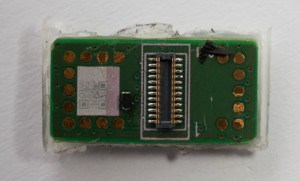Google Glass Gets The Teardown Treatment
Have you ever wondered how Google manages to cram all of that clever tech inside Google Glass? If so, look no further. The team over at Catwig have disassembled and dissected the device for the firs time to show the world its insides.
According to Catwig’s report, the hardware teardown of Google Glass consisted of 9 main pieces; the pod, the casing, the side touchpad, the main CPU board, the “behind-ear module,” the speaker, the display, the optics, and the camera.
The initial entry point into the Glass enclosure is via the pod. Once a single Torx T5 screw is removed, the whole pod can be removed from the main titanium frame — it’s not at all difficult to get into.
After the pod has been removed from the main frame, the casing can be pried off. The removal of the casing exposed a proximity sensor and an ambient light sensor, both of which are necessary for the display to function properly. For example, the light sensor determines how bright the display needs to be depending on the environment you’re in.
Removing Glass’casing exposes a few parts, one of the most important of which is the side touchpad. The side touchpad is a custom module made by Synaptics exclusively for Glass, and is driven by a complex Synaptics T1320A touchpad controller.
Following the removal of the side touchpad, the main logic board was fully exposed. The core chips powering Glass are: a TI OMAP4430 processor, 16GB of SanDisk flash memory and an Elpida mobile DRAM chip.
Google Glass keeps its battery in a rounded capsule behind the wearer’s ear, this is done in an effort to keep the unit’s weight evenly distributed. Glass is powered by a single-cell Lithium Polymer battery, with a maximum capacity of 570 mAh.
Just infront of the battery pod is a bone conduction speaker, which Glass uses to provide its user with a voice response. The bone conduction speaker appears to double as a tactile switch, although it’s not known what it actually activates.
The display is assembled with flexprint PCB, which connects the logic board to an assembly which contains the display, camera and some other complex sensors. The flexprint PCB is also home to the Glass’ inertial sensor, which appears to be an InvenSense MPU-9150.
The display has a native resolution of 640×360 (much like the picture at the top of this post), and the pixels are roughly 1/8th of the width of those on the iPhone 5’s display.
Google Glass only contains a small handful of optical elements, collaboratively used to enable the display’s image to float just centimeters from your face.
Much to my surprise, the Glass’ camera is nothing special. It seems to be of a typical smartphone size and format, the camera and the display appear to talk to the CPU independently.
If you want to find out more be sure to hit the source link below for more pictures and a detailed write up on what Catwig discovered along its disassembly journey.
- SourceCatwig








